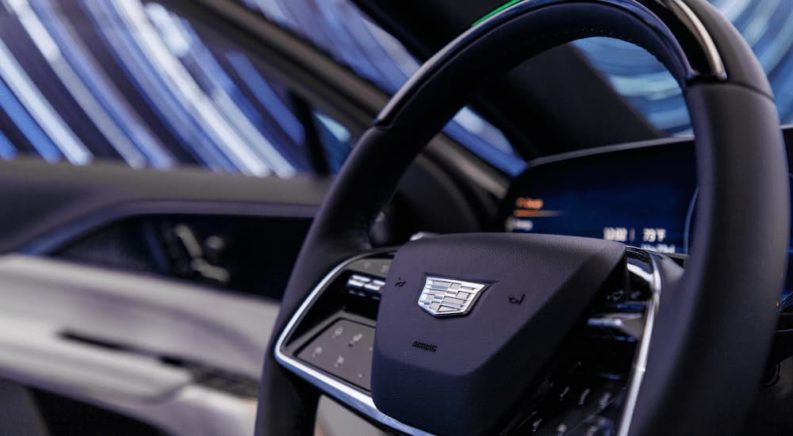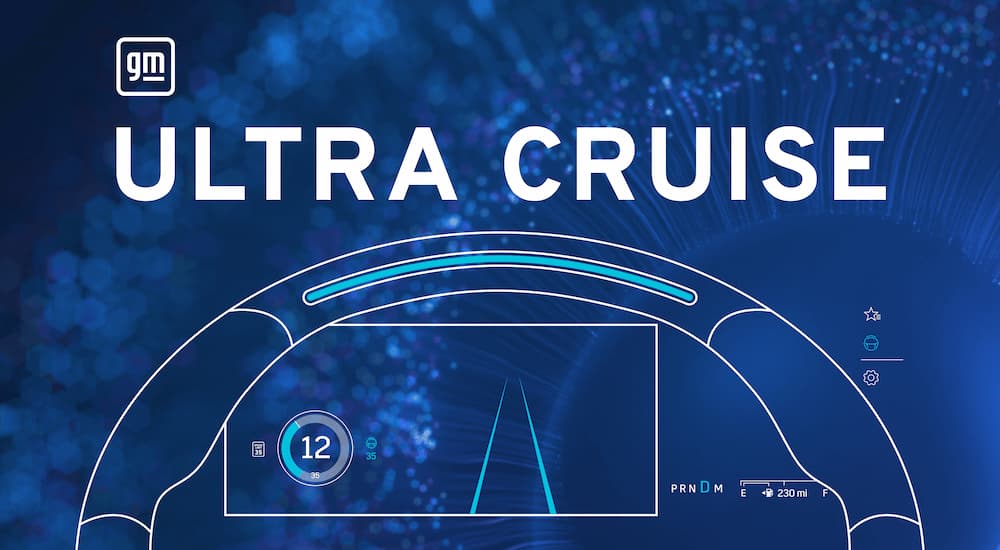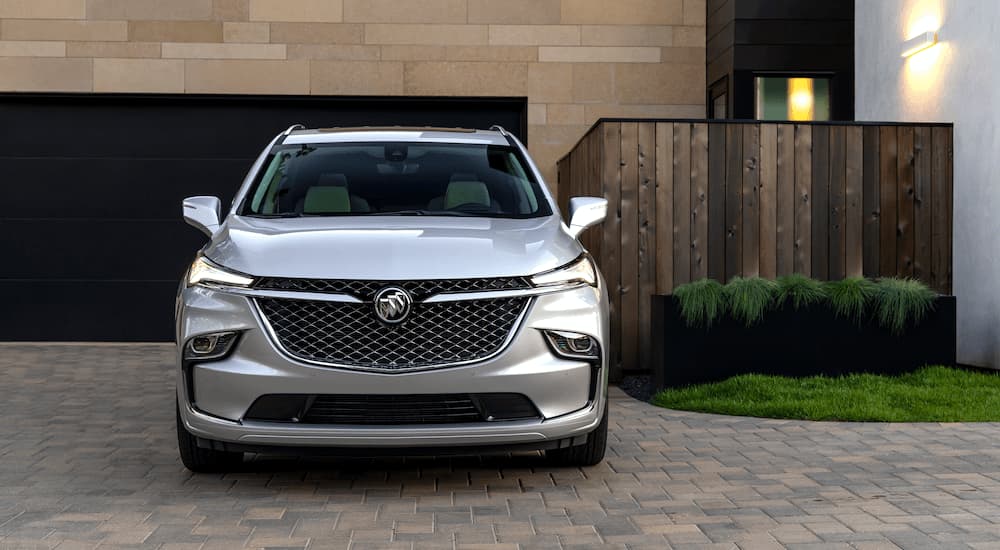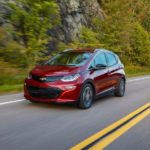In the battle for full self-driving consumer cars, GM has fired another shot across the bows of every other American car manufacturer with their newly revealed Ultra Cruise system. Not to be confused with their Super Cruise technology – though it does build upon it – Ultra Cruise offers an advanced level of hands-free driving that will bring us all one step closer to the sci-fi paradise we’ve been waiting for. Don’t get me wrong, Super Cruise was a terrific first step, but its functionality was still somewhat limited; Ultra Cruise leaves those limitations behind.
So what’s the difference between Ultra Cruise and Super Cruise, and what does all of this mean for GM fans? Let’s take a deep dive into these technologies and what they actually mean for all of us on the road. Spoiler alert: if you’re a GM enthusiast and you’ve been hoping to be able to drive from your home to work without ever touching the steering wheel, we’re one step closer to that being a reality.
The Big Announcement
On October 6th, GM issued a press release unveiling the details of their new Ultra Cruise technology and giving us all a glimpse of what it will have to offer. According to their statement, this all-new, advanced technology represents a “significant step in the company’s journey to enable its goal of zero crashes.” The goal with this technology is to allow for hands-free driving in 95% of all driving scenarios, and they’ve said that Ultra Cruise will ultimately be useable on every paved road in the US and Canada.
That’s a huge statement – so far, mainstream hands-free driving from most US car brands requires approved stretches of road, typically a major highway. But when Ultra Cruise launches, it will function on more than 2 million miles of roads in North America, with the ability to grow to 3.4 million miles of US roads. It will function on city streets, paved rural roads, and highways, allowing for hands-free driving throughout cities, towns, and most of the country.
One of the biggest aspects of this new technology is that it was developed completely in-house at GM without partnering with another company. Profit drives the auto industry, and partnerships always mean money is leaving the company somewhere, which can hurt innovation. But since this tech is entirely their own, it’s more likely that we’ll see Ultra Cruise become available on a wide range of GM models sooner. They’re going to want to push this with everything they’ve got because it’s a real game-changer for the industry and for GM.
What Is Ultra Cruise?
I covered a little of this already, but what are we really talking about with this Ultra Cruise tech? Without dipping into all of the nerd talk, it’s essentially a new computer system and architecture designed to scale over time and be future-proof so they can build on it rather than replace it. This is huge because it means that what we’re seeing is only the start, and it will be relatively easy for GM to update and improve upon it – they’ve already said it can be added to through over-the-air updates with additional features, new options, and other services.
What can it do? According to GM, it can react to traffic conditions and permanent traffic control devices (stoplights, signs, etc.) while following navigation routes. It can follow speed limits, go with the flow of traffic, and supports both automatic and on-demand lane changes. The Ultra Cruise system can make left and right-hand turns, avoid objects that suddenly enter the road or approach your vehicle, and park in residential driveways. It uses various cameras, radar, and LiDAR to have a 360-degree view around your vehicle and includes learning systems that can identify scenarios where it needs to be improved and send that data to GM’s techs so they can improve on it and provide updates.
Super Cruise vs Ultra Cruise
If you’re a fan of GM, then you’ve probably heard quite a lot about Super Cruise, their current hands-free driving technology. Most of the major manufacturers at this point have some kind of semi-autonomous driving solution, and Super Cruise is GM’s. The Super Cruise tech essentially builds on adaptive cruise control to automatically adjust your vehicle’s speed with traffic, even coming to a stop, while also offering the ability to keep you in your lane and change lanes without your taking the wheel.
Although Super Cruise is certainly impressive, it’s not perfect and still requires quite a lot of interaction from the driver. For one thing, you have to be watching the road at all times – it tracks the driver’s attention to ensure you’re aware of what’s going on, and you can take over if necessary. In addition to this, up until recently, you had to indicate to the Super Cruise system that you want to change lanes, then it did it for you, though an update this year is adding automatic lane changing to Super Cruise.
So, what’s the difference? Well….
Super Cruise
- Over 200,000 miles of highways
- Adaptive cruise control
- Automatic and on-demand lane changes
- Support for towing
Ultra Cruise
- Over 2,000,000 miles of paved roads
- React to permanent traffic control devices
- Follow navigation routes
- Automatic and on-demand lane changes
- Left and right-hand turns
- Parking in residential driveways
- Door-to-door hands-free driving
As you can see, Ultra Cruise is clearly the next step in GM delivering fully self-driving vehicles to their customers. In fact, once it’s fully functional, you can see vehicles with Ultra Cruise making entire drives without any direct input from the driver. This is the goal, after all, and how GM intends on creating a world with zero car crashes, eliminating driver error and recklessness that results in collisions, serious injuries, and fatalities.
When Will It Be Ready?
According to the press release from GM, Ultra Cruise will become available starting in 2023, so we’re still more than a year away from getting to experience this for ourselves. Much like how they handled Super Cruise, this tech will be introduced on Cadillac models first; if you’re a fan of luxury vehicles, then you’re in luck. Chevy, GMC, and Buick fans shouldn’t have to wait too long, however, as Super Cruise moved from Cadillac to other brands after just a few years. Since every major US car company is working on self-driving technology, GM won’t hesitate to make Ultra Cruise more widespread as needed to maintain an advantage over their competition.
What Comes Next?
Full door-to-door self-driving might be the dream right now, but it’s not the ultimate goal. On more than one occasion, Elon Musk has commented that his dream with self-driving technology is for a vehicle to go coast-to-coast across the US while fully automated, without any driver input at all. Even though we’re talking about GM here, I have to imagine that they have similar aspirations and would probably like to be the first to do it.
Whichever car brand can have a vehicle drive across the US on its own first is certainly going to make headlines, and their automated tech will more easily become a household name. With this new technology from GM, they seem to be in a strong position to take the lead on this and perhaps deliver on the full potential of self-driving vehicles. By the end of this decade, it’s entirely possible that thousands of vehicles on the road will be fully automated and able to make long trips without any input from a driver. The next step, I assume, is to eliminate the requirement for driver attention, letting people experience the full horror of what technology has wrought upon us: long road trips where the driver has to interact more with other passengers!






